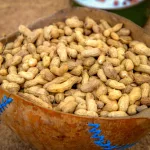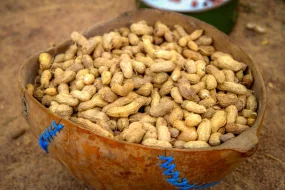What is Nigerian Palm Oil
Nigerian palm oil is a type of vegetable oil that is derived from the fruit of the oil palm tree, scientifically known as Elaeis guineensis. It’s a vital ingredient in Nigerian cuisine and has a rich history in the country. Let me break it down for you!
The oil palm tree, which is native to West Africa, is widely cultivated in Nigeria. The fruit of this tree, which is about the size of a small plum, is where palm oil comes from. The fruit is typically red or orange when ripe and contains a fleshy outer layer, a middle layer, and a hard inner seed or nut.

The process of making palm oil involves extracting the oil from the fleshy part of the fruit. Traditionally, this is done through a method called “pounding and boiling.” The fleshy fruit is pounded to separate the oil from the fruit’s fibers, and then it’s boiled to extract the oil. This process gives the oil its distinctive red or orange color, which is a key characteristic of Nigerian palm oil.
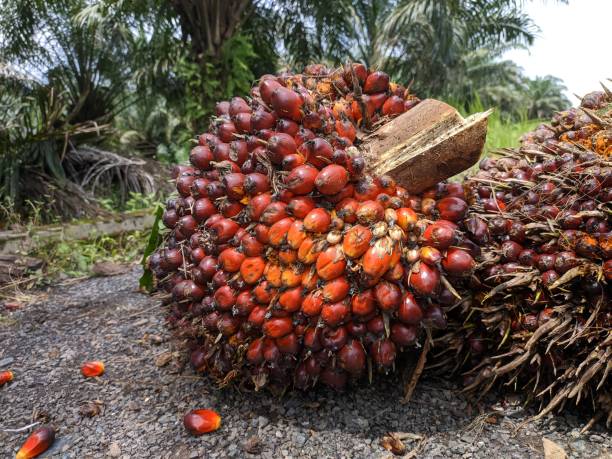
Nigerian palm oil is not only used in cooking but also plays a significant role in various cultural and traditional practices in Nigeria. It’s a staple in Nigerian cuisine, a primary cooking oil for frying, stewing, and sautéing. It adds a unique flavor and color to many traditional dishes, such as jollof rice, egusi soup, and dodo (fried plantains).
The oil is not only appreciated for its culinary uses but also has various health benefits. It’s a good source of vitamin E and is rich in antioxidants, which are believed to have several health benefits.
Nigerian palm oil has had its share of controversy as well, especially in the context of sustainable agriculture and deforestation. The demand for palm oil on a global scale has led to concerns about environmental impact and the need for sustainable practices in its production.
So, in a nutshell, Nigerian palm oil is a versatile and culturally significant ingredient in Nigerian cooking, known for its distinctive color and flavor. It’s more than just an oil; it’s a part of Nigeria’s culinary and cultural heritage.
Comparative Analysis of Nigerian Palm Oil
comparative analysis of Nigerian palm oil, looking at various aspects that set it apart from other palm oils around the world.

-
Color and Appearance:
- Nigerian palm oil is known for its deep red or orange color, which is a result of the traditional pounding and boiling extraction process. This vibrant hue makes it easily distinguishable from other palm oils.
-
Flavor Profile:
- Nigerian palm oil has a distinct, bold flavor that adds a unique taste to dishes. It has a rich, nutty, and slightly earthy taste, which makes it a crucial component in traditional Nigerian cuisine.
-
Cultural Significance:
- Nigerian palm oil holds a special place in the culture and cuisine of Nigeria. It’s a staple in many traditional dishes, and its use goes beyond just cooking; it’s often a symbol of hospitality and celebration.
-
Production Methods:
- Traditional methods are still widely used in Nigeria to produce palm oil, involving manual pounding and boiling. This gives it a homemade, artisanal quality. In contrast, some other countries have adopted modern, industrialized methods for palm oil production.
-
Health Benefits:
- Like other palm oils, Nigerian palm oil contains vitamin E and antioxidants. These nutrients are believed to have various health benefits, such as promoting skin health and acting as an anti-inflammatory agent.
-
Environmental Concerns:
- Nigerian palm oil production faces similar environmental concerns as palm oil industries in other countries. Issues like deforestation, habitat destruction, and biodiversity loss have raised sustainability concerns. Efforts are being made to promote sustainable palm oil practices.
-
Global Demand:
- Nigerian palm oil primarily serves domestic consumption, with some exports to neighboring countries. In contrast, countries like Indonesia and Malaysia are major global exporters of palm oil.
-
Price and Availability:
- Nigerian palm oil is generally more accessible and affordable within the region, while palm oils from Southeast Asia, for instance, may have a broader global reach but could be priced differently.
-
Culinary Versatility:
- Nigerian palm oil is versatile in Nigerian cuisine, used in various dishes like soups, stews, rice, and even snacks. It’s less commonly used in other world cuisines.
Nigerian palm oil stands out for its vibrant color, robust flavor, and deep cultural roots. Its traditional production methods, cultural significance, and distinct taste make it a unique ingredient in Nigerian cooking. While it shares similarities with palm oils from other regions in terms of health benefits and environmental concerns, its individuality shines through its cultural and culinary importance in Nigeria.
Nutritional Properties of Nigerian Palm Oil
Nigerian palm oil, like other palm oils, has specific nutritional properties that make it a notable cooking oil. Let’s explore the nutritional aspects of Nigerian palm oil:
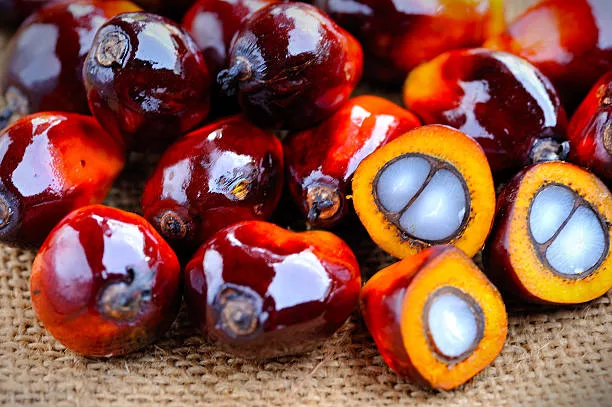
1. Calories:
- Nigerian palm oil is calorie-dense, providing approximately 120 calories per tablespoon. This makes it an energy-rich cooking oil, which can be beneficial for those who need a quick source of energy.
2. Healthy Fats:
- The primary fat in palm oil is saturated fat, but it also contains unsaturated fats, such as monounsaturated and polyunsaturated fats. Saturated fat, while often considered less healthy, is a stable fat that can withstand higher cooking temperatures, making palm oil suitable for frying.
3. Vitamin E:
- Nigerian palm oil is a good source of vitamin E, which is an antioxidant. Antioxidants help protect cells from damage caused by free radicals and may contribute to skin health.
4. Carotenoids:
- The deep red or orange color of Nigerian palm oil is due to the presence of carotenoids, which are pigments with antioxidant properties. These compounds, such as beta-carotene, are converted into vitamin A in the body and contribute to its rich color.
5. Coenzyme Q10:
- Nigerian palm oil also contains coenzyme Q10 (CoQ10), which is vital for cell function and energy production in the body.
6. Phytosterols:
- Phytosterols are plant compounds found in palm oil that have a structure similar to cholesterol. They can help lower the absorption of dietary cholesterol, potentially promoting heart health.
7. Anti-Inflammatory Properties:
- Some studies suggest that the natural compounds in palm oil may have anti-inflammatory properties. Reducing inflammation is essential for overall health and may help with chronic diseases.
8. Environmental Impact:
- While not a nutritional property, it’s worth noting that the production of palm oil in a sustainable and environmentally friendly manner is crucial. Unsustainable palm oil production can have adverse ecological effects, such as deforestation and habitat destruction.
It’s important to consume palm oil in moderation, as it is calorie-dense and high in saturated fat. Excessive consumption of saturated fats has been associated with an increased risk of heart disease. However, when used in a balanced diet, Nigerian palm oil can offer some nutritional benefits, such as its vitamin E content and potential antioxidant properties.
Remember that a diverse diet, rich in a variety of fruits, vegetables, and whole grains, is key to obtaining a wide range of nutrients and maintaining overall health.
Health Benefits of Nigerian Palm Oil
Nigerian palm oil offers several health benefits when consumed in moderation as part of a balanced diet. Let’s explore some of these health advantages:

1. Antioxidant Properties:
- Nigerian palm oil is rich in antioxidants, particularly vitamin E and carotenoids. These compounds help protect your body’s cells from oxidative stress caused by free radicals. Oxidative stress can lead to cellular damage and is linked to various chronic diseases, including cancer and cardiovascular conditions.
2. Heart Health:
- While palm oil does contain saturated fats, it also has unsaturated fats in its composition, such as monounsaturated and polyunsaturated fats. This balanced fatty acid profile sets it apart from other saturated fats, like those found in animal products. Research suggests that palm oil may not negatively impact heart health when used in moderation. Additionally, palm oil contains phytosterols, which can reduce the absorption of cholesterol in the intestines, potentially reducing the risk of heart disease.
3. Vitamin E Benefits:
- Palm oil is a valuable source of vitamin E, which is a group of fat-soluble antioxidants. These antioxidants play a crucial role in maintaining healthy skin, supporting the immune system, and protecting cells from damage. Vitamin E is also linked to potential benefits in managing conditions such as Alzheimer’s disease and certain types of cancer.
4. Potential Anti-Inflammatory Properties:
- Some components in palm oil have demonstrated anti-inflammatory properties in studies. Chronic inflammation is linked to various health problems, including heart disease, arthritis, and autoimmune disorders. Consuming foods with anti-inflammatory properties, like palm oil, may help manage inflammation in the body.
5. Nutrient Absorption:
- The fat content in palm oil can enhance the absorption of fat-soluble vitamins like A, D, E, and K, which are essential for various bodily functions, including bone health, vision, and immunity.
6. Energy Boost:
- Nigerian palm oil is calorie-dense, providing a quick source of energy. This can be particularly beneficial for individuals with high energy requirements, such as athletes and those with physically demanding jobs.
7. Skin and Hair Health:
- The antioxidants in palm oil, including vitamin E and carotenoids, can promote healthy skin and hair. They protect against free radical damage, which can lead to premature aging and skin issues. Vitamin E is also known for its role in skin hydration and rejuvenation.
It’s important to highlight that while Nigerian palm oil has potential health benefits, it should be used in moderation, as it is calorie-dense and high in saturated fat. Overconsumption of saturated fats can lead to weight gain and increase the risk of heart disease. It’s also crucial to maintain a well-balanced diet, rich in a variety of foods, including fruits, vegetables, whole grains, lean proteins, and other sources of healthy fats, for optimal health.
Lastly, choosing sustainably produced palm oil is not only better for your health but also for the environment. Unsustainable palm oil production can contribute to deforestation, habitat destruction, and the loss of biodiversity. Opting for sustainably sourced palm oil helps protect the planet and supports responsible sourcing practices.
Physical Properties of Nigerian Palm Oil
The physical properties of Nigerian palm oil include various characteristics related to its appearance, texture, and behavior at different temperatures. Let’s explore these properties in detail:
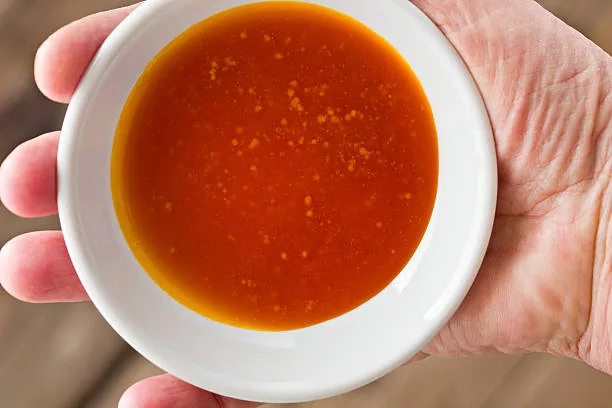
1. Color:
- Nigerian palm oil is renowned for its distinctive red or orange color. This vibrant hue is a result of the carotenoid pigments naturally present in the oil. The color can range from deep red to a lighter orange, depending on factors like ripeness and processing methods.
2. Viscosity:
- Palm oil is a highly viscous or thick liquid at room temperature. It has a consistency that is thicker than many other cooking oils. This viscosity can be attributed to the oil’s higher saturated fat content compared to some other vegetable oils.
3. Texture:
- At lower temperatures, such as when stored in a cool environment, palm oil solidifies and takes on a buttery or waxy texture. As it warms up, it returns to its liquid state. This property is due to the presence of both saturated and unsaturated fats in the oil.
4. Melting Point:
- The melting point of palm oil is relatively low compared to some other fats. It typically melts around 95-98°F (35-37°C). This low melting point makes it suitable for various cooking methods, including frying, as it quickly liquefies when heated.
5. Flavor and Aroma:
- Nigerian palm oil has a distinctive, nutty, and slightly earthy flavor. It also carries a mild aroma, which is often described as pleasant and characteristic of palm oil. These sensory attributes contribute to the uniqueness of dishes prepared with palm oil.
6. Stability:
- Palm oil is a stable oil, meaning it can withstand high cooking temperatures without breaking down or producing harmful compounds. Its stability is due to its balanced composition of saturated and unsaturated fats.
7. Clarity:
- Freshly extracted palm oil may appear cloudy or turbid due to the presence of suspended particles, but it typically clears up when stored and left to settle. This clarity is a sign of good quality palm oil.
8. Smokiness:
- When palm oil is heated to its smoke point, it can produce smoke and develop a characteristic aroma. It’s important to avoid overheating palm oil, as this can affect the flavor and safety of the oil.
Understanding these physical properties of Nigerian palm oil is essential for its proper utilization in cooking. Whether it’s used for sautéing, frying, or as an ingredient in traditional dishes, these characteristics make it a versatile and unique cooking oil with a strong cultural and culinary heritage in Nigeria.
Chemical Properties of Nigerian Palm Oil
The chemical properties of Nigerian palm oil involve its composition of different chemical compounds and characteristics. Let’s delve into the chemical aspects of this versatile oil:

1. Fatty Acid Composition:
- Nigerian palm oil primarily consists of different types of fatty acids, which are the building blocks of fats. The two major types of fatty acids found in palm oil are:
- Palmitic Acid: This is a saturated fatty acid, which means it has no double bonds between its carbon atoms. It’s one of the predominant saturated fats in palm oil.
- Oleic Acid: This is a monounsaturated fatty acid, which means it has one double bond between carbon atoms. Monounsaturated fats are considered heart-healthy.
2. Saturated Fat Content:
- Palm oil is unique among vegetable oils because it has a relatively high content of saturated fats. Saturated fats are typically solid at room temperature and are often linked to heart health concerns. The presence of palmitic acid contributes to palm oil’s saturated fat content.
3. Monounsaturated Fat Content:
- Alongside saturated fats, palm oil also contains monounsaturated fats, particularly in the form of oleic acid. Monounsaturated fats are considered healthier than saturated fats and can positively impact cholesterol levels.
4. Unsaturated Fats:
- While palm oil is higher in saturated fats compared to many other vegetable oils, it still contains some unsaturated fats, including both monounsaturated and polyunsaturated fats. These unsaturated fats contribute to the overall chemical profile of palm oil and help balance its composition.
5. Antioxidants:
- Nigerian palm oil contains natural antioxidants, including vitamin E and carotenoids. Antioxidants are compounds that help protect the oil from oxidative damage. In the body, they may offer potential health benefits by neutralizing harmful free radicals.
6. Phytosterols:
- Palm oil also contains phytosterols, which are plant compounds that have a similar structure to cholesterol. They can compete with cholesterol for absorption in the intestines, potentially lowering overall cholesterol levels and reducing the risk of heart disease.
7. Carotenoids:
- The rich red or orange color of palm oil comes from carotenoids. These compounds also serve as antioxidants and can be converted into vitamin A in the body, supporting functions like vision and the immune system.
8. Tocopherols and Tocotrienols:
- These are forms of vitamin E found in palm oil. They serve as antioxidants and help maintain the oil’s quality and stability, preventing it from going rancid.
9. Free Fatty Acids (FFA):
- The acidity of palm oil is measured by its free fatty acid content. Lower FFA levels indicate a higher-quality oil. Elevated FFA levels may signify spoilage or poor processing, affecting the oil’s taste and safety.
10. Smoke Point:
- The smoke point of an oil is the temperature at which it begins to break down and produce smoke when heated. Palm oil has a relatively high smoke point, making it suitable for frying and high-heat cooking methods. This is due to its stable chemical composition.
The Physicochemical Properties of Freshly Prepared Palm Oil
| Parameter | Unit | Day 1 | Day 7 | Day 14 | Day 21 |
| Acid value | mgKOH/g | 4.0±0.08 | 4.94±0.33 | 6.08±1.17 | 6.68±0.44 |
| Free Fatty acid | mgKOH/g | 1.96±0.07 | 2.45±0.11 | 2.81±0.26 | 3.09±0.14 |
| Saponification value | mgKOH/g | 189.05±1.63 | 178.29±5.67 | 136.52±4.07 | 157.49±4.24 |
| Peroxide value | mEq/kg | 12.25±0.21 | 14.53±0.78 | 13.90±0.14 | 14.90±0.24 |
| Iodine value | Wijs | 50.13±2.21 | 30.19±1.71 | 35.90±1.83 | 46.10±2.54 |
| Refractive index | ºBx | 1.31±0.14 | 1.39±0.03 | 1.46±0.07 | 1.58±0.19 |
| Viscosity | Kgm-1s-1 | 160.0±4.24 | 133.0±7.07 | 136.5±6.36 | 126.50±4.94 |
| Specific gravity | Kgm-3 | 0.90±0.04 | 0.91±0.06 | 0.93±0.07 | 0.97±0.01 |
| Cloud point | ºC | 10.39±0.01 | 9.74±0.08 | 10.89±0.07 | 11.09±0.158 |
| Flash point | ºC | 304.5±0.71 | 300.5±2.12 | 301.5±0.71 | 308.5±0.17 |
| Melting point | ºC | 4.94±0.08 | 4.99±0.01 | 4.69±0.01 | 4.19±0.01 |
| Boiling point | ºC | 342±4.24 | 339±1.41 | 350±1.41 | 348±282 |
REFERENCE >>>> Ndidi NWACHOKO1*, Udiomine B. AKURU1, Inyingi A. GREEN1, Reward M. KPAANADEE1, Tamuno-Boma ODINGA1 and Chukwudi O. EGBUNEFU African Journal of Biochemistry Research
Understanding these chemical properties of Nigerian palm oil is crucial for its culinary applications and evaluating its potential impact on health. The balance of different fatty acids and the presence of beneficial compounds like antioxidants and phytosterols contribute to its unique chemical composition.
Ways to Use Nigerian Palm Oil
Nigerian palm oil is a versatile ingredient used in a wide range of dishes, particularly in traditional Nigerian cuisine. Here are several ways to use Nigerian palm oil:
1. Cooking Stews and Sauces:
- Nigerian palm oil is a fundamental ingredient in many traditional Nigerian stews and sauces. It’s added to dishes like Egusi soup, Okra soup, and pepper soup, not only for its distinctive flavor but also for the rich red or orange color it imparts.
-

Cooking Stews With Nigerian Palm Oil
2. Jollof Rice:
- Jollof rice is a beloved West African dish, and Nigerian palm oil plays a significant role in its preparation. The oil is used to sauté the rice and vegetables, giving the dish a unique taste and its characteristic reddish hue.

3. Frying:
- The high smoke point of palm oil makes it suitable for deep frying. In Nigerian cuisine, it’s often used to fry foods like plantains, yam, and puff-puff, a popular fried snack.
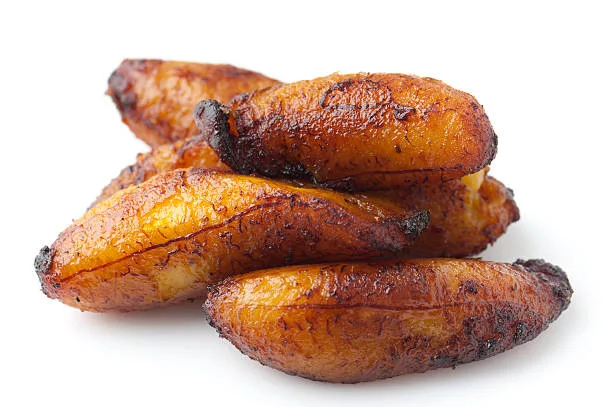
4. Fried Rice:
- Nigerian palm oil is used to prepare fried rice, enhancing both the flavor and color of the dish.
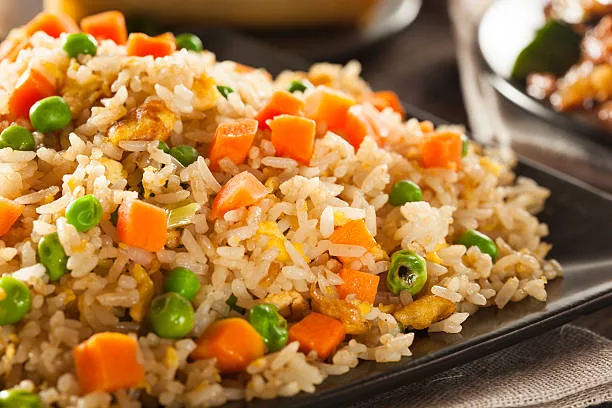
5. Stir-Frying Vegetables:
- Some Nigerian recipes incorporate palm oil into stir-fried vegetables, adding a rich flavor and color to the dish.
6. Meat and Fish Dishes:
- Palm oil is commonly used in the preparation of meat and fish dishes, such as pepper soup and suya (grilled skewered meat), adding depth and character to the flavors.
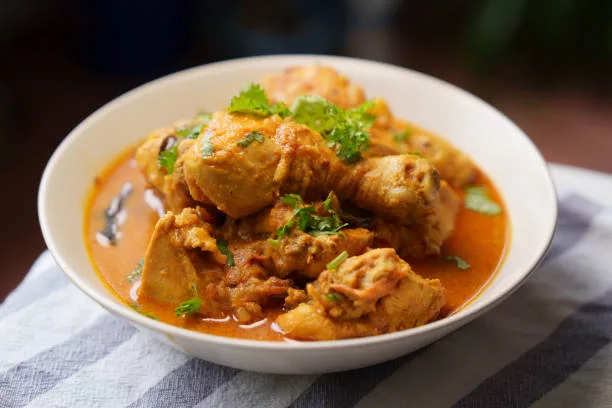
7. Starchy Dishes:
- Nigerian palm oil is used in the preparation of starchy dishes like yam pottage and fufu. It serves to enhance the taste and prevent sticking.
8. Spreads:
- In some regions of Nigeria, palm oil is mixed with ground crayfish and spices to create a spicy condiment or spread. This is often served with yam, bread, or other staples.
9. Sauces for Swallow:
- “Swallows” are starchy side dishes like eba and amala, which are typically served with rich sauces made from palm oil, vegetables, and protein sources.
10. Stuffed Peppers:
Nigerian palm oil can be used to prepare stuffed peppers, where a mixture of rice, spices, and protein is cooked inside hollowed-out bell peppers. The oil adds flavor to the filling.
11. Palm Nut Soup:
Some Nigerian regions prepare a delicious dish called palm nut soup or banga soup using palm fruit extract. It is aromatic and flavorful.
12. Snacks:
Nigerian palm oil is used in making popular snacks like chin chin and buns. These deep-fried treats have a unique taste and color thanks to the inclusion of palm oil.
13. Seasoning:
A small amount of palm oil can be used to season and enhance the flavor of various dishes, from beans to grilled chicken. It acts as both a flavor enhancer and a colorant.
It’s important to use Nigerian palm oil in moderation as part of a balanced diet because of its high-calorie content and saturated fat. When used thoughtfully, it contributes to the unique and delicious flavors of Nigerian cuisine. Additionally, choosing sustainably sourced palm oil supports ethical and environmentally responsible practices in its production.
Recipes Using Nigerian Palm Oil
Here are a few classic Nigerian recipes using Nigerian palm oil:
1. Jollof Rice:
- Jollof rice is a vibrant and flavorful West African dish. To prepare it, sauté rice with Nigerian palm oil, onions, tomatoes, and spices. Add chicken or vegetables for a complete meal. The palm oil not only adds color but also imparts a unique taste to this dish.

2. Egusi Soup:
- Egusi soup is a rich and hearty Nigerian stew. To make it, combine ground melon seeds (egusi), leafy vegetables, and assorted meats or fish in a flavorful broth. Nigerian palm oil is a crucial ingredient for adding a distinctive flavor and a reddish hue to the soup.
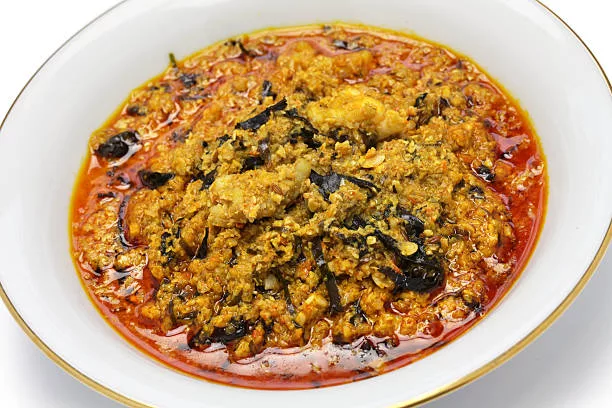
3. Fried Plantains:
- Fried plantains are a popular Nigerian snack or side dish. Heat palm oil in a pan and fry slices of ripe plantains until they are golden and caramelized. The palm oil gives the plantains a delicious flavor and a slightly crispy texture.
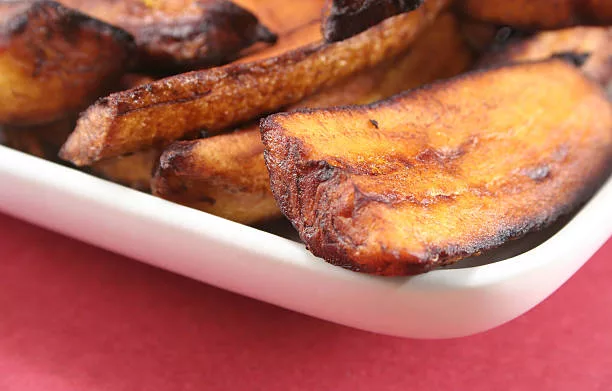
4. Banga Soup (Palm Nut Soup):
- Banga soup is a traditional Nigerian delicacy made from palm fruit extract. To prepare it, simmer palm fruit extract with spices, meat or fish, and leafy vegetables. The palm oil-infused soup is both aromatic and satisfying.
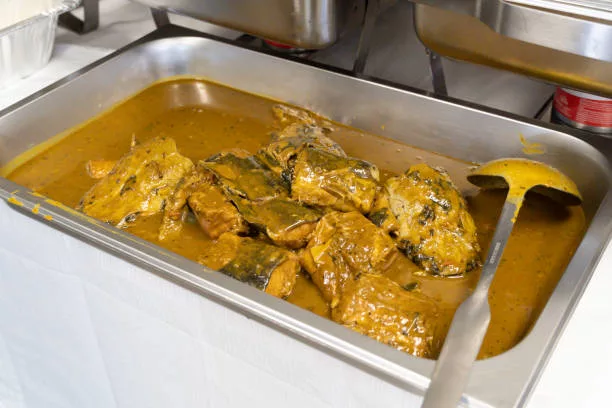
5. Okra Soup:
- Okra soup is a slimy, hearty dish. Saute okra with Nigerian palm oil, onions, and your choice of protein. It’s often served with fufu or pounded yam.

6. Pepper Soup:
- Nigerian palm oil can be used to prepare spicy and flavorful pepper soup. It’s commonly used for dishes featuring fish, goat meat, or chicken. The palm oil adds depth and richness to the broth.
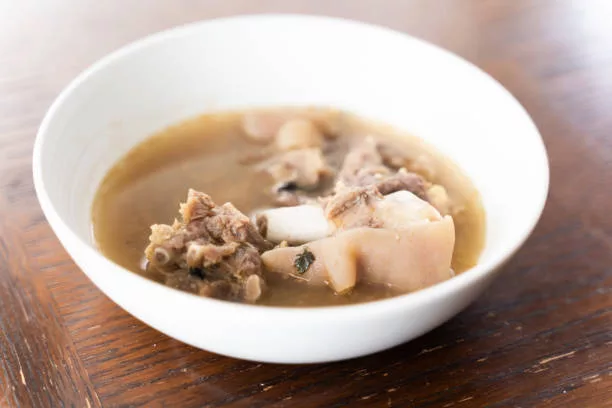
7. Stewed Beans:
- Nigerian palm oil can be used to prepare a delightful pot of stewed beans. Combine cooked beans with sautéed onions, tomatoes, and spices, and simmer in palm oil for a delicious and colorful side dish.

8. Suya:
- Suya is a popular Nigerian street food. It involves skewered and grilled meat, often beef or chicken. Before grilling, the meat is marinated in a mixture that includes Nigerian palm oil, groundnut powder, and spices.

9. Moi Moi:
- Moi Moi is a steamed bean pudding. To make it, blend peeled beans with palm oil, spices, and other ingredients. The palm oil enhances the texture and flavor of the dish.

10. Bitter Leaf Soup:
Bitter leaf soup is a traditional Nigerian soup made with bitter leaves, which are washed and soaked to reduce bitterness. It’s prepared with palm oil, spices, and protein sources like fish or meat.
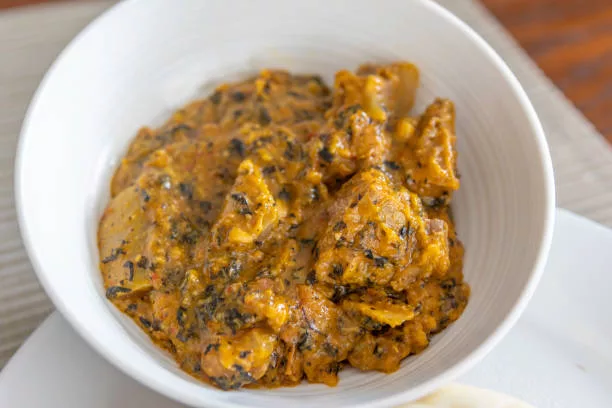
11. Abacha (African Salad):
Abacha is a traditional Igbo dish made with cassava. The dish includes shredded cassava, vegetables, and seasonings, with palm oil added for flavor and a glossy finish.

12. Akara:
- Akara are deep-fried bean cakes made from black-eyed peas. The beans are ground, mixed with spices, and then deep-fried in palm oil until they are golden and crispy.

13. Ofe Akwu (African Walnut Soup):
- This rich and flavorful Igbo soup is prepared with African walnuts and often contains meat, fish, or seafood. Nigerian palm oil is used to give the soup a glossy appearance and a unique taste.
-

Ofe Akwu
14. Groundnut Soup:
- Groundnut soup, also known as peanut soup, is a creamy and nutty dish made by simmering groundnut paste with Nigerian palm oil, spices, and a variety of meats or fish.

15. Asaro (Yam Porridge):
- Asaro is a hearty yam porridge cooked with Nigerian palm oil, tomatoes, peppers, and various seasonings. It’s often served as a main dish with fried or grilled protein.

16. Ewa Agoyin:
- Ewa Agoyin is a spicy mashed bean dish. Cooked black-eyed peas are mashed and served with a fiery palm oil-based sauce made from red peppers, onions, and spices.

17. Banga Rice:
- Banga rice is a one-pot dish where rice is cooked in banga soup. It’s a flavorful and aromatic dish made with palm fruit extract, spices, and your choice of protein.

18. Ukodo:
- Ukodo is a yam and goat meat pepper soup. It’s prepared by simmering yam chunks, goat meat, and palm oil in a spicy broth. The palm oil adds richness to the dish.

19. Edikang Ikong:
- Edikang Ikong is a popular vegetable soup in Nigeria. It’s made with a combination of two types of leafy greens, meat or fish, and Nigerian palm oil for added flavor and richness.

20. Banga Jollof Rice:
- Banga Jollof Rice is a delightful variation of the classic Jollof rice. It involves cooking the rice with banga soup, giving it a unique taste and the reddish hue characteristic of Nigerian palm oil.
21. Ofada Rice and Ayamase Sauce:
- Ofada rice is a local Nigerian rice variety often served with Ayamase sauce. The sauce, made from green bell peppers, scotch bonnet peppers, onions, and Nigerian palm oil, is spicy and full of flavor.

22. Gbegiri Soup:
- Gbegiri is a Yoruba bean soup made from black-eyed peas. It’s often served with ewedu and amala or other swallows. Nigerian palm oil adds depth and flavor to this traditional dish.

These recipes showcase the versatility of Nigerian palm oil in a variety of dishes, from soups and stews to porridge and snacks. They capture the rich culinary traditions and flavors of Nigerian cuisine. Enjoy exploring these delicious and hearty meals!
Remember that the use of Nigerian palm oil in these recipes not only imparts a unique flavor but also contributes to the rich, reddish, or orange color that is characteristic of many Nigerian dishes. Enjoy exploring these flavorful recipes and the culinary traditions they represent!
Potential Side Effects and Things to Remember
While Nigerian palm oil offers several health benefits and is a key ingredient in many delicious dishes, it’s important to be aware of potential side effects and some key considerations:
1. High Calorie Content:
- Nigerian palm oil is calorie-dense, like all oils and fats. Consuming it in excess can contribute to weight gain. Be mindful of portion sizes, especially if you’re watching your calorie intake.
2. Saturated Fat Content:
- Palm oil is relatively high in saturated fats, which have been associated with increased cholesterol levels and heart disease when consumed in excess. It’s important to use palm oil in moderation as part of a balanced diet.
3. Environmental Impact:
- The production of palm oil, not limited to Nigerian palm oil, has been associated with deforestation and habitat destruction in some regions. Choosing sustainably sourced palm oil helps mitigate these negative environmental impacts.
4. Allergies:
- While allergies to palm oil are rare, some individuals may experience allergic reactions. If you suspect an allergy, seek medical advice.
5. Quality Matters:
- Opt for high-quality, unadulterated palm oil. Check for freshness and avoid palm oil that has gone rancid or has a sour odor.
6. Smoke Point:
- Be mindful of the smoke point of palm oil. Excessive heating can lead to the production of harmful compounds and undesirable flavors. Avoid overheating the oil when cooking.
7. Balance in Diet:
- Nigerian palm oil can be part of a balanced diet, but it should be complemented with a variety of other foods, including fruits, vegetables, whole grains, lean proteins, and other sources of healthy fats.
8. Individual Health Considerations:
- If you have specific health concerns, such as high cholesterol or heart disease, consult with a healthcare professional to determine the best dietary choices for your individual health needs.
9. Ethical Sourcing:
- Choose sustainably produced palm oil to support ethical and environmentally responsible practices in its production. Look for certifications like RSPO (Roundtable on Sustainable Palm Oil) when purchasing palm oil products.
10. Cultural and Culinary Enjoyment:
While being aware of the health considerations, remember that Nigerian palm oil is an integral part of the country’s culinary heritage and offers unique flavors to traditional dishes. Enjoy it in moderation and as part of a diverse diet.
In summary, while Nigerian palm oil can be enjoyed for its flavor and potential health benefits, it should be consumed in moderation, considering its calorie and saturated fat content. Making informed choices, choosing sustainably sourced palm oil, and maintaining a balanced diet is essential for enjoying its culinary and nutritional advantages while minimizing potential risks.
Conclusion
Nigerian palm oil is a versatile and culturally significant ingredient in Nigerian cuisine, adding rich flavors and vibrant colors to a wide array of traditional dishes. While it offers potential health benefits, it’s essential to use it in moderation due to its high calorie and saturated fat content. Here’s the bottom line:
The Positives:
- Nigerian palm oil is rich in antioxidants, including vitamin E and carotenoids, which offer potential health benefits.
- It can be part of a balanced diet and may support heart health when consumed in moderation.
- Its versatility in the kitchen makes it a key ingredient in many delicious and culturally important Nigerian recipes.
The Cautions:
- Nigerian palm oil is calorie-dense, so portion control is important for weight management.
- It contains saturated fats, which should be limited in the diet to reduce the risk of heart disease.
- Choose sustainably sourced palm oil to promote ethical and environmentally responsible practices.
In the end, Nigerian palm oil can be enjoyed as a flavorful and colorful addition to your culinary repertoire, but it should be part of a diverse and balanced diet to maximize its benefits and minimize potential risks.





